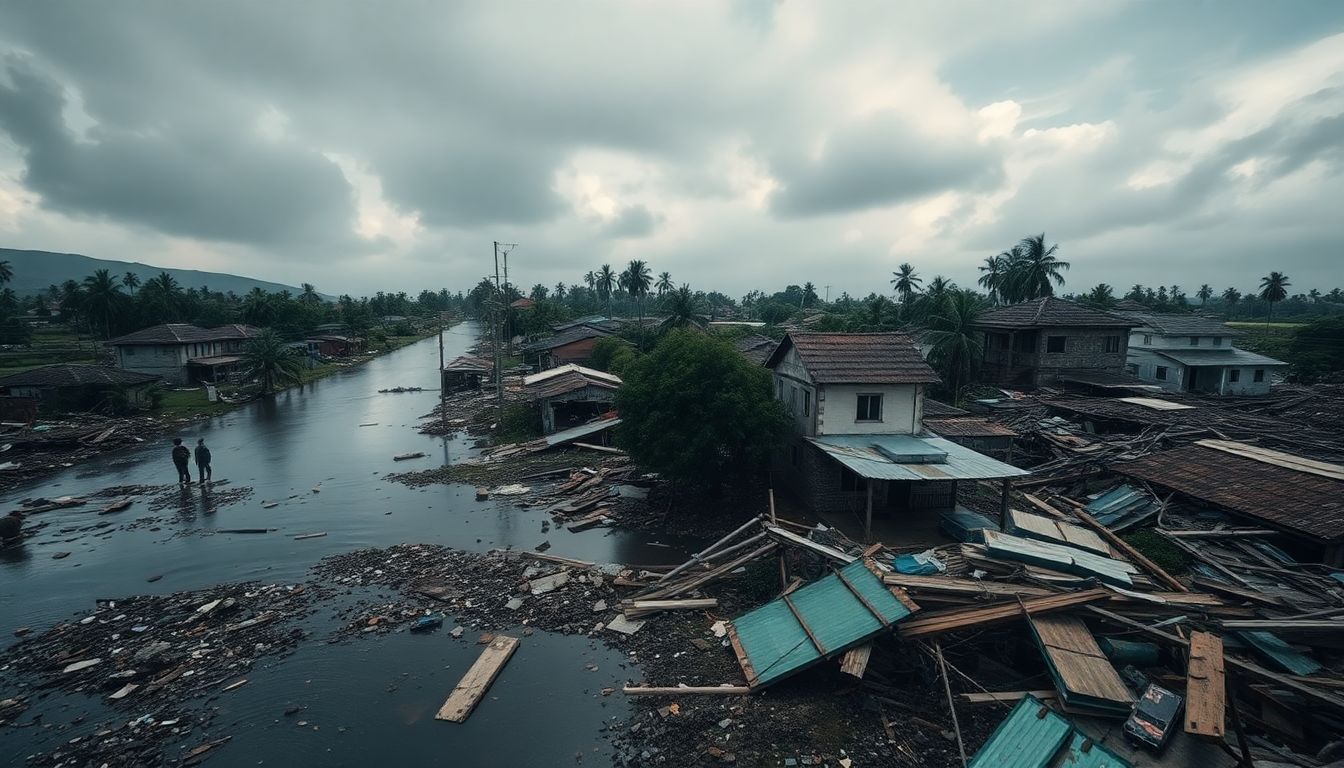
Cyclone Chido: Devastating Mayotte and the Path to Recovery
Mayotte, a small French island in the Indian Ocean, recently faced the overwhelming force of Cyclone Chido. This storm caused significant destruction, affecting homes, infrastructure, and the lives of thousands. The aftermath of Cyclone Chido underscores the challenges faced by Mayotte as it begins the journey of recovery.
The Unfolding Disaster: Cyclone Chido's Impact on Mayotte
Wind Speeds and Storm Surge: Assessing the Severity
Cyclone Chido brought with it wind speeds that reached up to 150 km/h (93 mph). The storm also generated a substantial storm surge that flooded coastal regions. Official weather service reports highlighted that the high tide combined with strong winds led to severe flooding, wiping out entire coastal communities.
Infrastructure Damage: Roads, Buildings, and Utilities
The cyclone inflicted extensive damage to Mayotte's infrastructure:
- Over 60% of roads were rendered impassable.
- Two bridges collapsed, disconnecting key areas.
- The power grid faced severe strain, leaving more than 20,000 residents without electricity.
Local authorities estimated that repair costs could surpass €50 million.
Human Impact: Casualties, Injuries, and Displacement
In the wake of Cyclone Chido:
- At least 15 confirmed fatalities were reported.
- Over 1,200 individuals were injured.
- Approximately 8,000 people were displaced from their homes.
Providing shelter and essential services remains a significant challenge, as many communities struggle to cope with the aftermath.
Relief and Recovery Efforts: A Collaborative Response
International Aid and Support: Mobilization of Resources
Several countries and organizations have stepped up to assist Mayotte:
- France pledged immediate financial aid.
- NGOs like the Red Cross mobilized logistics and medical support.
Aid received includes:
- Financial assistance worth over €10 million.
- Medical supplies and food shipments.
Local Response: Community Resilience and Self-Help Initiatives
Local communities have also shown remarkable resilience:
- Neighborhood groups formed to help distribute food and water.
- Local organizations organized clean-up efforts across affected areas.
These self-help initiatives have provided much-needed support in the recovery process.
Challenges in the Recovery Process: Logistical and Financial Constraints
Recovery efforts face numerous hurdles:
- Accessing remote areas has proven difficult due to damaged infrastructure.
- Financial constraints hinder the speed of rebuilding.
Experts have stressed the need for long-term financial support to ensure effective recovery.
The Economic Impact: Assessing the Damage to Mayotte's Economy
Tourism and the Service Sector: Disruption and Losses
Cyclone Chido has severely impacted Mayotte's tourism:
- Hotel occupancy rates dropped by 80% post-cyclone.
- Many tourism-dependent businesses face closures.
Economic losses in the tourism sector alone are estimated at €15 million.
Agriculture and Fisheries: Damage to Livelihoods
The cyclone also devastated agricultural lands and fisheries:
- Major crops like bananas and ylang-ylang faced extensive damage.
- Fishing communities reported a 50% drop in yields.
These losses directly threaten the livelihoods of many farmers and fishermen.
Long-Term Economic Recovery: Strategies and Challenges
Rebuilding Mayotte's economy will require a multi-faceted approach:
- Investment in infrastructure improvements.
- Diversification of the local economy to reduce reliance on tourism.
Challenges include limited financial resources and potential future climate threats.
Climate Change and Vulnerability: Understanding the Risks
Cyclone Chido in Context: Mayotte's Exposure to Cyclones
Mayotte's geographical location makes it vulnerable to cyclones. Past records indicate that extreme weather events are becoming more frequent and intense due to climate change.
Climate Change Adaptation: Mitigation and Preparedness
To mitigate these impacts, Mayotte must implement better preparedness strategies:
- Investing in storm-resistant infrastructure.
- Developing community awareness programs is crucial for disaster readiness.
Long-Term Sustainability: Building Resilience for the Future
Moving forward, Mayotte should focus on sustainable development:
- Creating strategies to reduce vulnerability to climate threats.
- Prioritizing ecological conservation to maintain natural defenses against storms.
Experts recommend integrating climate adaptation into all levels of planning.
Lessons Learned and Future Preparedness
Improving Early Warning Systems: Enhancing Disaster Response
Assessing the effectiveness of early warning systems during Cyclone Chido reveals areas for improvement:
- Better dissemination of data could help communities prepare earlier.
- Experts suggest incorporating community feedback into future emergency plans.
Strengthening Building Codes and Infrastructure: Reducing Vulnerability
Existing building codes and infrastructure adequacy need examination:
- Recommendations include updating standards for new constructions.
- Employing best practices from other cyclone-prone regions can enhance resilience.
Community Engagement and Disaster Education: Empowering Residents
Community involvement is vital for disaster preparedness:
- Education programs can teach residents about emergency plans and readiness.
- Engaging local leaders can foster a culture of preparedness.
Conclusion: Rebuilding Mayotte and Strengthening Resilience
Cyclone Chido has left a significant mark on Mayotte, impacting lives and infrastructure. The ongoing relief and recovery efforts highlight the island's resilience but also expose the need for long-term planning and adaptation strategies. As Mayotte rebuilds, prioritizing climate change adaptation and community engagement will be essential for a stronger, more resilient future.






